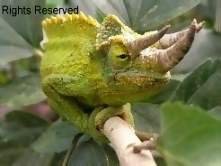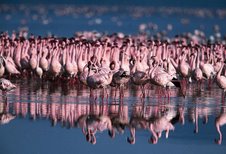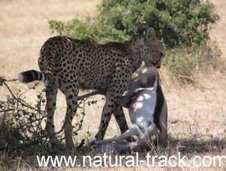Just recently, the phenomenon wildebeest migration was recognized as the Seventh wonder of the world. This natural event takes place on July – October in Maasai Mara which lies 270 kilometers south east of Nairobi. The animals move from northern Serengeti plains in Tanzania across Mara and Telek Rivers in Maasai Mara.
If you have not been following this series or if this is your first time you are hearing about the wildebeest migration, here is an eye witness occurrences on this year's migration which has just started.
The light showers that swept across the central Mara over the last week have drawn more herds from the northern Serengeti. The Mara River, about 3 kilometers north of the south-Mara bridge, has been the main arena over the past few days. Heavy crossings have taken place as thousands of the Serengeti herds crossed west on the Mara Triangle. The river is still low, making the crossing a bit easy for the animals. Once in the Mara, these herds have taken a traditional route splitting into two, with one group heading west and crossing over the Mara River while the other, north into Meta and towards Burrungat plains.
Our guests had a week full of Kenya safari excitement on game drives due the close proximity of the herds. and we are assured of even better things as the migration progresses! It's amazing to know that although this phenomenon is widely known as the wildebeest migration, it is the burchell's zebra who pioneer the pilgrim and they are usually the first ones to cross Mara river.
I tend to believe, the main characteristic witnessed in Mara – that of the largest mass movements of ungulates is not the sole stuff that was considered to rate this event as a global wonder, but the drama itself. Listen! As these ungulates move in millions, thousands and hundreds, your interest should be focused on the predators rather than the 'Ngunus' since they will definitely appear in your shots whether still or in video slots. Look out for the drama of: - the crocodiles in Mara and Telek rivers, the lions, leopards, and my favorite cat the cheetah, as they follow and hunt the herbivores. If you are not able to spot the carnivores, just look out for the scavengers both the hyenas and vultures and you will no miss one or two carnivores enjoying a kill as the vultures wait impatiently.
The Northern (Loita) and the southern (Serengeti) herds have now merged on the south Mara triangle. The converging point is a recently burnt area where new nutritious shoots are beginning to sprout after the recent light showers. An interesting occurrence we have witnessed in the last two years, some of the Loita herds are starting to cross back at Paradise crossing point onto the eastern side of the river - where they had crossed the just previous week! The remaining animals from these herds have over the past week been streaming in small numbers towards Paradise Plains, with some crossing westwards onto Mara conservancy.
About the predators, Lion sightings were remarkably high over the past week. There are not many lion cubs at the moment, but some females are expected to give birth over the next couple of months. Olkiombo Pride has settled east of Mara Explorer about 1.5kms along the main road from the airstrip. The Ridge Pride is still very active, with many attempted hunts being witnessed during the day in the past week as they respond to the pounding hooves of the migrating herbivores. The concentration of the herds is however still lower in their territory.
Encounters with cheetahs have now become more frequent than in the previous weeks. Leopards are also starting to get active and their sightings have improved remarkably. As the migration may have taken the name of Maasai Mara wildebeest migration, it will be of no importance to tell you about Mara alone without mentioning the Serengeti.
The movement from Serengeti to Mara is also very interesting although it might not be as dramatic as the Mara triangle episode. This is how it goes – When the rain stops on May/June, they start to migrate from south of Serengeti to the central and west of Serengeti plains stretching as far as Grumeti game reserve and lake Victoria. From July they move northwest of Serengeti in Bolonga and Ikorongo game reserve and finally plunge into to Mara.
The first thing you should do when you see the first wildebeest in Mara, I guess is to clap for them. Just imagine the long journey they have to take every year sometimes passing through dry areas and going for days without water. This means only those which can do without water for a long period and can adapt to the poor forage reach Mara. You can also imagine the challenge of crossing Grumeti, Telek and Mara rivers. Clap anyway!
Around November, most of the pastures in Mara are exhausted and the animals start the cycle again to now greener pastures in south of Serengeti, Ngororongoro and Maswa game reserves. The best place to be if you missed the Mara and Telek drama is Lobo or Loliondo area in October and November. Likely, at this time, wildebeest and Zebras have made their way to south Serengeti, giving birth in a very short space of time making places such as Ndutu woodland and the surrounding plains a massive spotlight for predators.
You might be wondering – are the plains left empty during the migration? The answer is No. The migration does not mean that the plains are completely empty. There are many animals which do not follow the migration pattern and have become residents both in Mara and Serengeti. These include predators such as lions, leopard and cheetahs while herbivores include some wildebeest, Zebras, Gazelles, Impalas, Topi to mention but a few.
Although the migration has become a core attraction in Mara, it is still a lifetime experience to do an Kenya wildlife safari and visit Mara anytime of the year. There is a lot of good stuff………
See you there!
Saturday, July 26, 2008
Subscribe to:
Post Comments (Atom)









2 comments:
Its Amazing Platforme to visit Kenya And Explore to Kenya
Raj
+91-9871274394
www.indiantourandtravel.com
Its Amazing Platforme to visit Kenya And Explore to Kenya
Raj
+91-9871274394
www.indiantourandtravel.com
Post a Comment